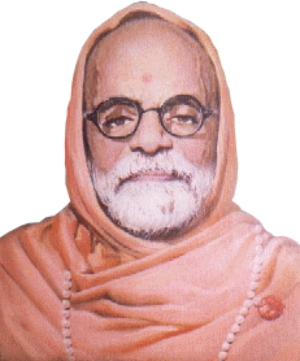visual curriculum
Table of Contents
| 1. | Introduction |
| 2. | History of Vedic Math |
| 3. | Applications |
| 4. | Why you should know Vedic Math |
| 5. | Summary |
| 6. | FAQs |
13th November 2020
Reading time: 3 minutes
Introduction
What is Vedic Math?
Who invented Vedic Math?
Vedic Mathematics is a collection of ancient tricks and techniques to execute arithmetic operations quickly and more efficiently. Vedic Math comes from the Vedas, more specifically the Atharva Veda. It was revived by Indian mathematician Jagadguru Shri Bharati Krishna Tirthaji between 1911 and 1918. He then published this work in a book called Vedic Mathematics in 1965. It comprises 16 sutras (formulae) and 13 sub sutras.
History and Applications of Vedic Math - PDF
If you ever want to read it again as many times as you want, here is a downloadable PDF to explore more.
| 📥 | History and Applications of Vedic Math - PDF |
Also read:
What is the history of Vedic Math?
Bharati Krishna Tirtha was born in March 1884 in Puri Village, Orissa, a state in India. Apart from mathematics, he also excelled in Science, Humanities, and Sanskrit as a student. He was passionate about meditation and spiritualism. He claims to have gained knowledge of the Vedic Sutras while meditating in a forest near Singeri for eight years. According to Krishna Tirtha, he learned the sutras from the Vedas, like the Atharva Veda and the Rig Veda. Hence the term ‘Vedic Mathematics’.
He wrote the initial 16 sutras in 1957. He planned to pen more down, but cataract developed in both eyes, and he passed away in 1960.

Applications of Vedic Math
Vedic Math is an ancient technique that simplifies multiplication, divisibility, complex numbers, squaring, cubing, square roots, cube roots, recurring decimals, and auxiliary fractions.
Vedic Maths has the following benefits:
- Makes elementary calculation 10-15 times faster
- Helps in accurate guessing
- Useful for all classes
- Reduces burden (need to learn tables up to 9 only)
- A magical tool to reduce finger counting and rough work
- Increases concentration
- Helps in reducing silly mistakes
Why should you know Vedic Math?
Vedic maths provides answers in one line, as opposed to the several steps of traditional mathematics. There are six Vedanganas. The Jyotish Shastra is one of the six. Vedic Math forms part of this Jyotish Shastra. Vedic maths consists of 3 segments or ‘skandas’ (branches). The beauty of Vedic Math lies in its simplicity; all calculations can be done on pen and paper. The approach to solve problems stimulates and sharpens the mind, memory, and focus. It improves creativity and promotes innovation.
Easy to Understand
Vedic Maths is elementary and can be comprehended easily. Once a student begins to understand the basic concepts, they can get creative with their approach. Consequently, their understanding improves. It is flexible and applies to students of all ages. Using Vedic Math in competitive exams may give students an edge over the others.
Also learn:
- Addition Tricks in Vedic Math
- Subtraction Tricks in Vedic Math
- Multiplication Tricks in Vedic Math
- Division Tricks in Vedic Math
- Squaring Tricks in Vedic Math
- Squareroot Tricks in Vedic Math

Summary
Vedic mathematics is a gift of Krishna Tirtha; it is a collection of invaluable techniques that can profoundly improve our speed, understanding, and performance in mathematics and other sciences. Vedic Maths is not getting its due importance; it is a fantastic method. Vedic Math is a great technique to master calculations, being more efficient and accurate.
Practicing vedic math for 30 to 45 minutes a day will do wonders for anyone looking to better their abilities. Enhance your mental calculation.
About Cuemath
Cuemath, a student-friendly mathematics and coding platform, conducts regular Online Classes for academics and skill-development, and their Mental Math App, on both iOS and Android, is a one-stop solution for kids to develop multiple skills. Understand the Cuemath Fee structure and sign up for a free trial.
Frequently Asked Questions (FAQs)
Why is it called Vedic Maths?
The word Vedic is a derivative of Vedas. The Vedas are the inspiration for Vedic mathematics. ‘Ved’ means sacred knowledge.
How many levels is Vedic Math divided into?
There are four levels of Vedic Math. It is broadly divided into Junior and Senior, which are both divided further into two parts.
What is the right age to learn Vedic Math?
The right age to begin learning Vedic Math is around class 4 or 5.
Which is better Vedic Maths or Abacus?
-
Vedic mathematics is an ancient Indian technique, on the other hand, Abacus was practiced in China and Europe.
-
Vedic math can be done mentally, but for abacus, one needs a kit.
-
Abacus only covers addition, subtraction, multiplication, and division. Vedic Math applies to modern mathematics as well.
-
A student should start learning abacus from a young age, but Vedic Math has no such compulsion.
-
In competitive exams where no calculator is allowed, Vedic Math will make a difference.

